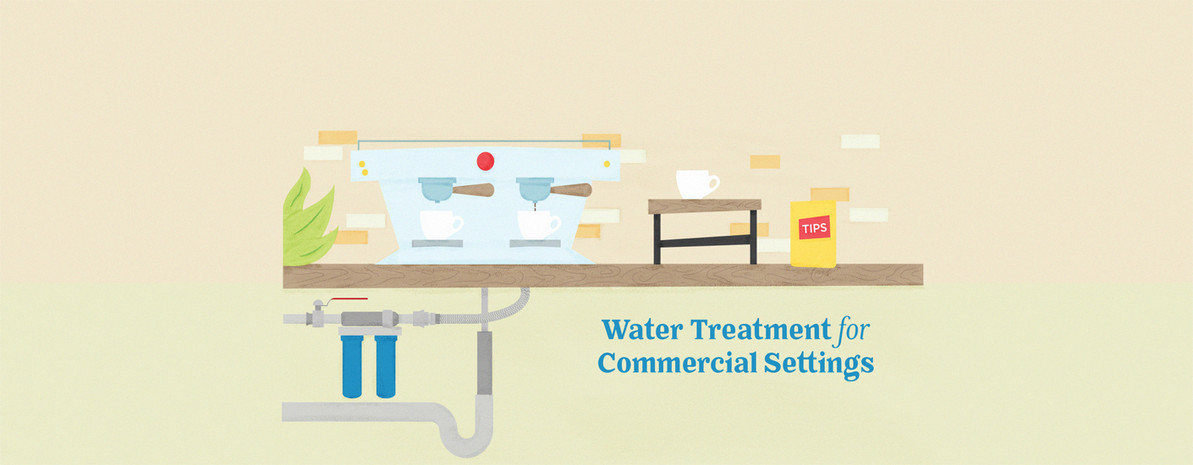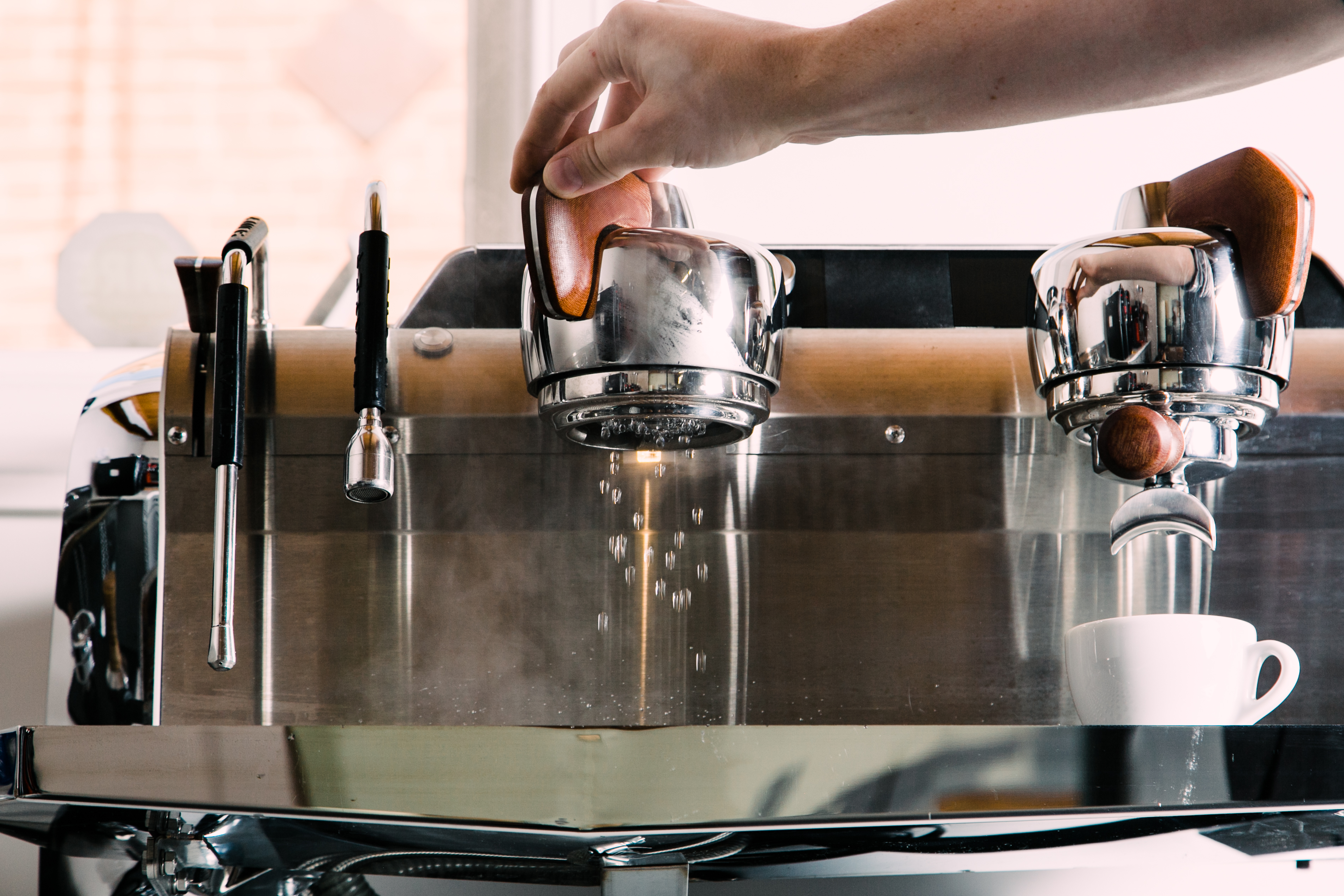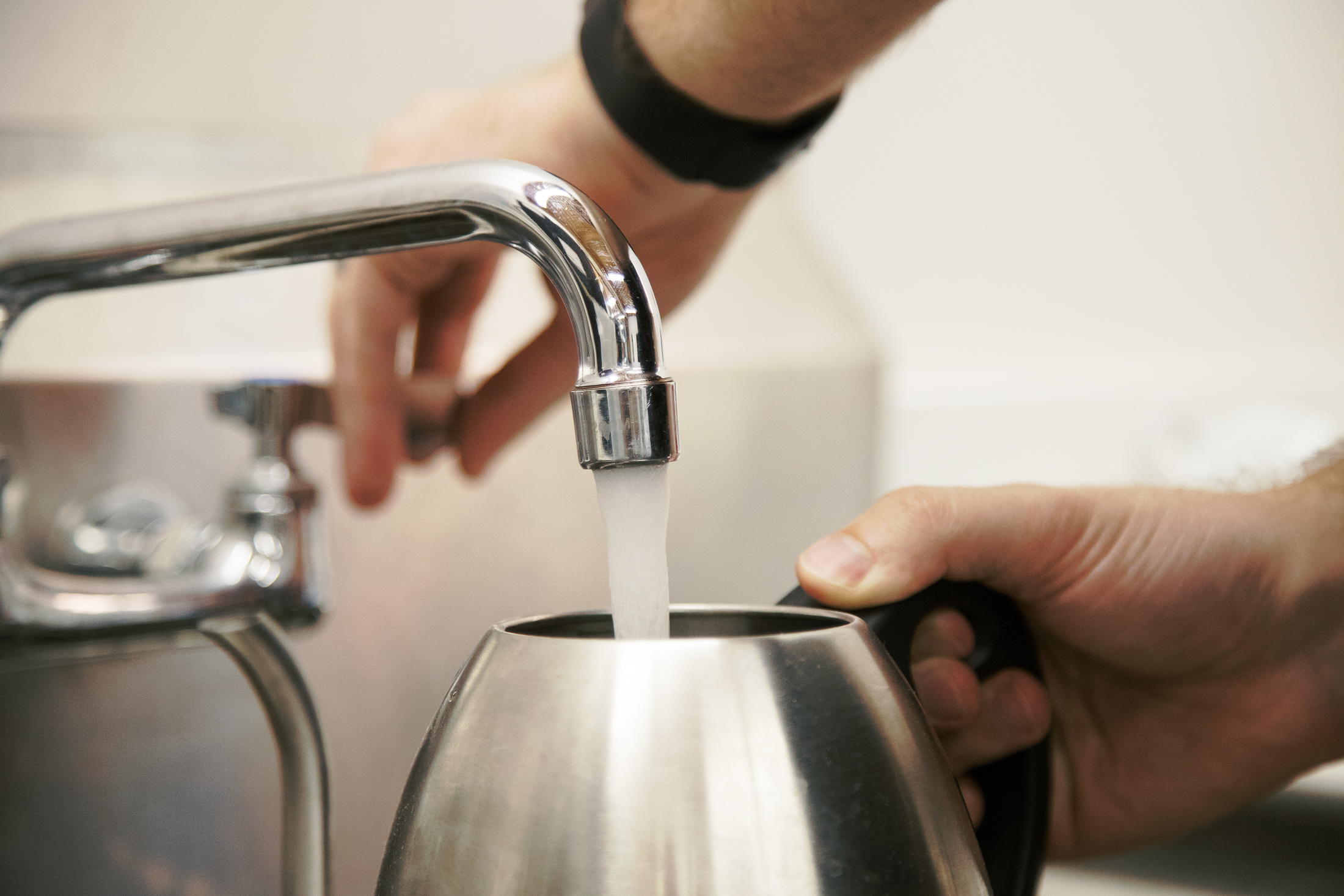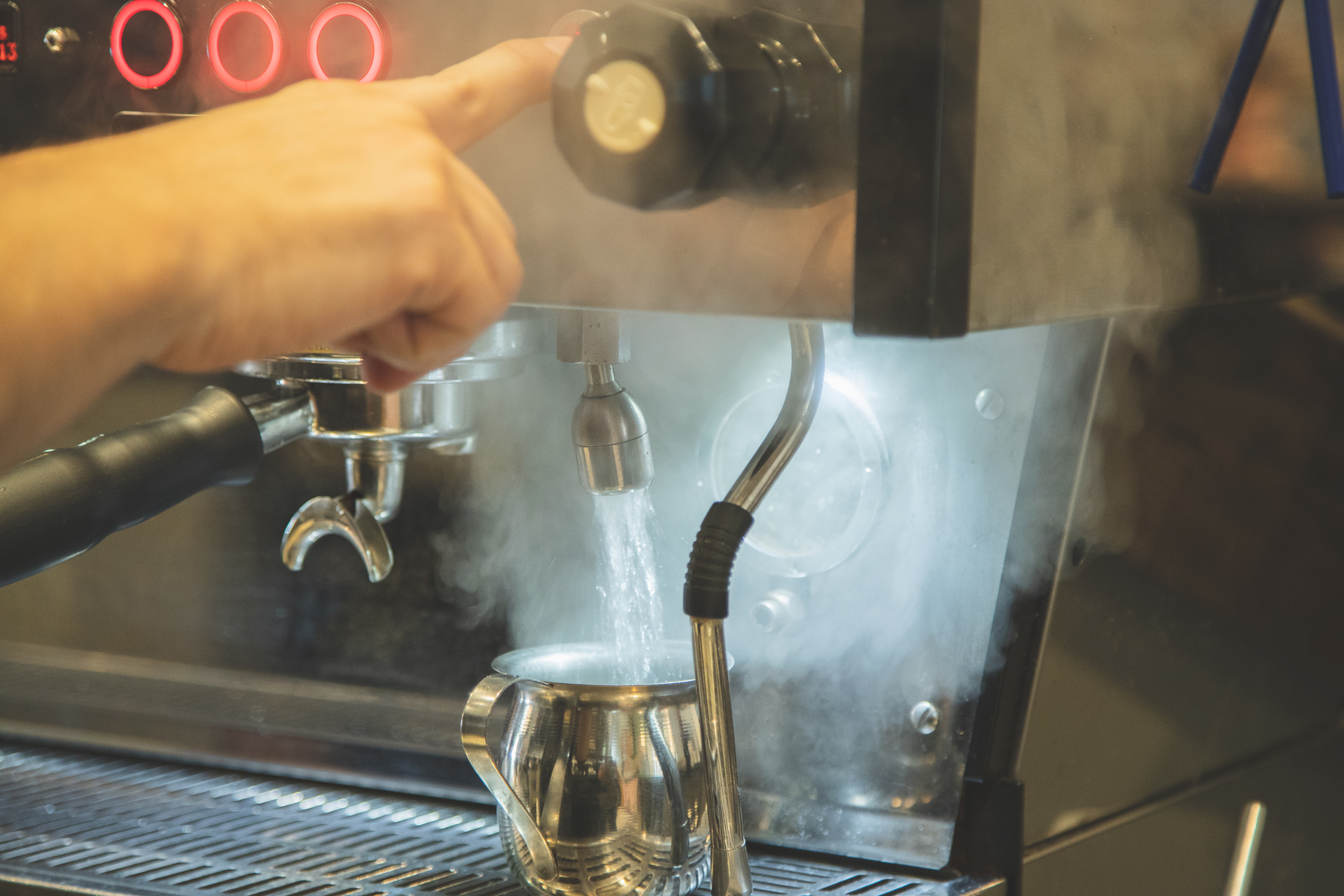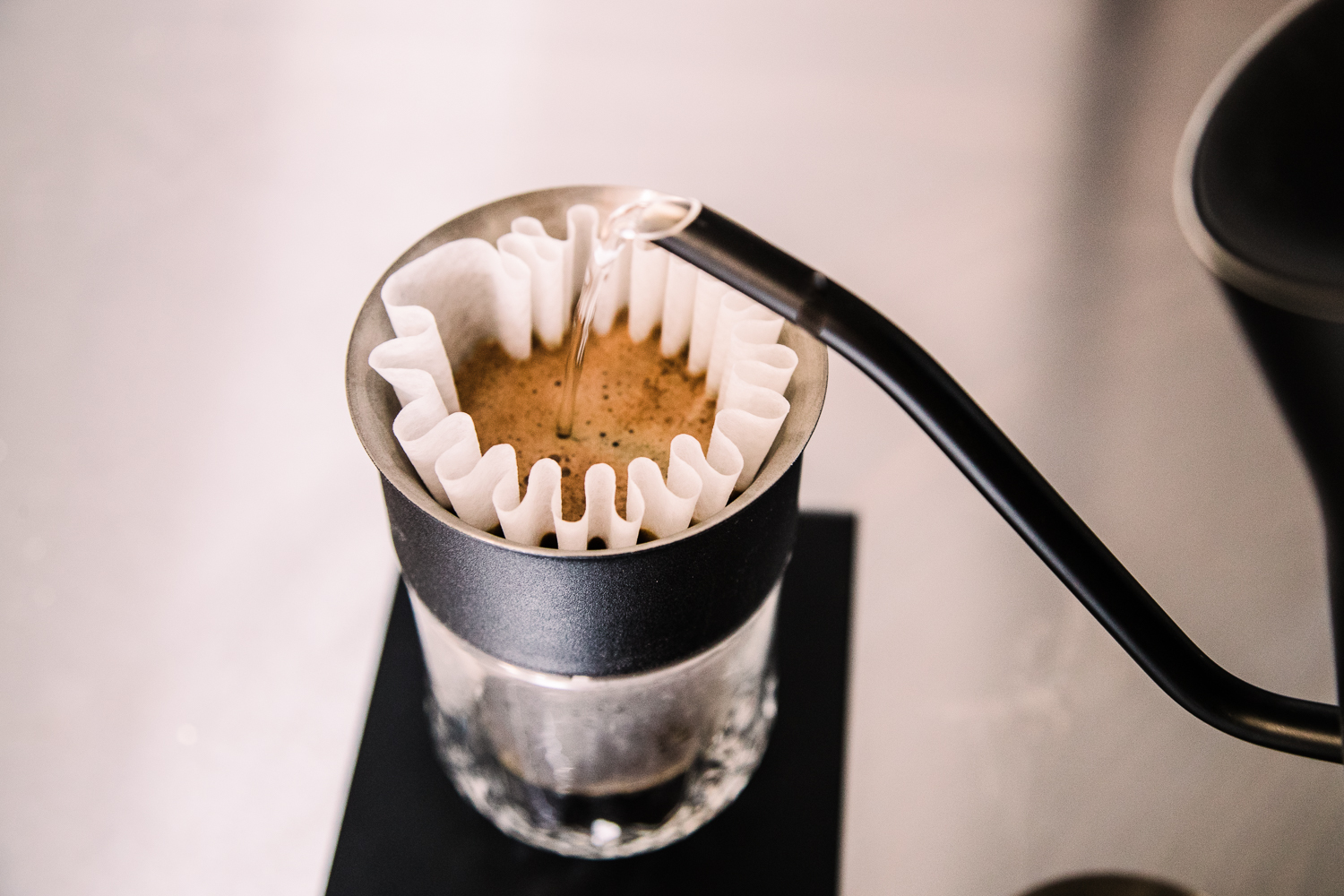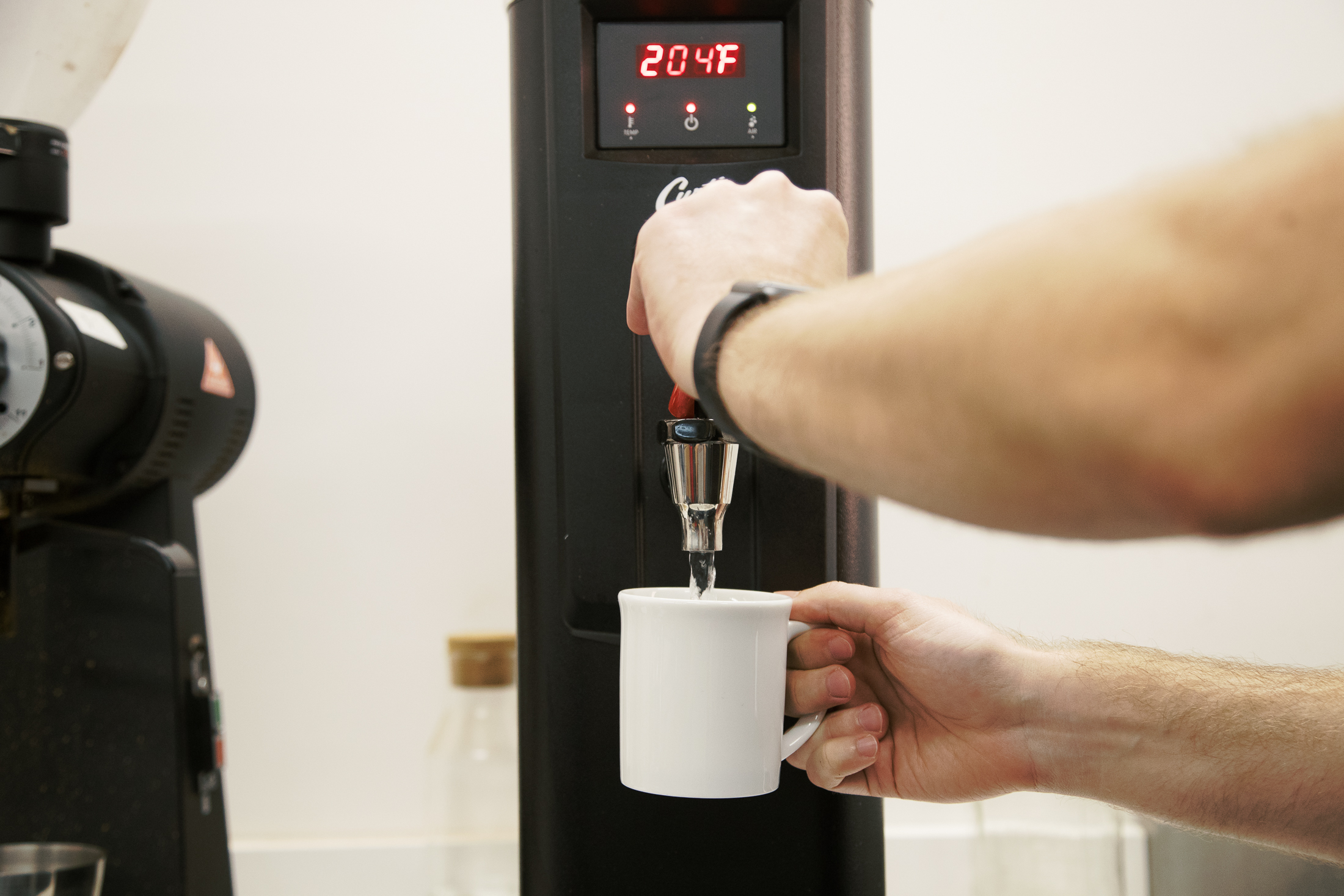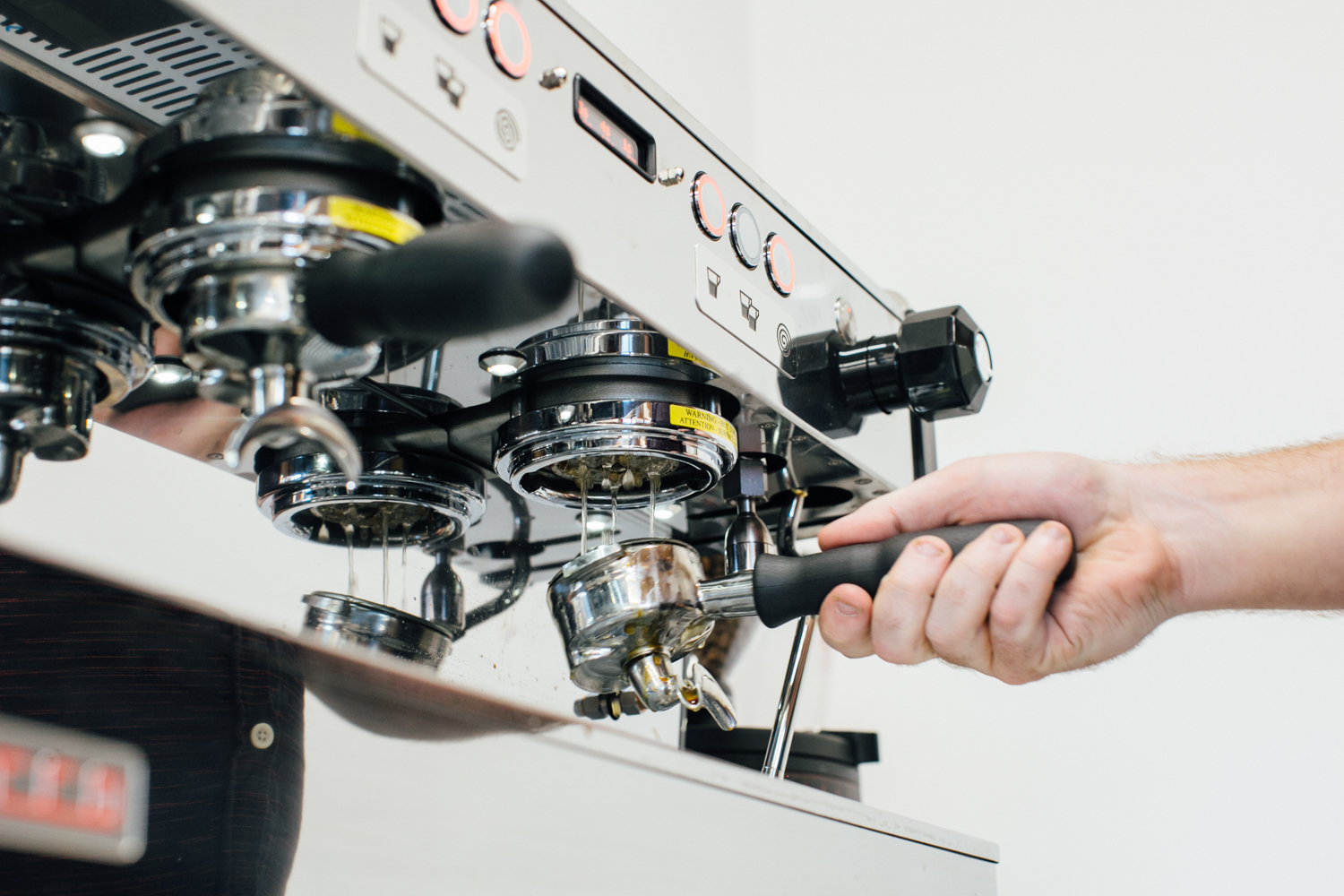A Beginner's Guide to Commercial Water Filtration
When it comes to brewed coffee, water makes up more than 98%. However, it is commonly one of the most overlooked components of coffee preparation.
When it comes to brewed coffee, water makes up more than 98%. However, it is commonly one of the most overlooked components of coffee preparation. We all know that water is H2O (two parts hydrogen and one part oxygen), but unless it’s distilled, there are varying types and amounts of substances in water--dissolved minerals, chemicals, and sediment.
While water quality is important for the home, it is absolutely critical for commercial settings, not only affecting beverage flavor but also ensuring that your equipment lasts a long time. Failing to take water composition into consideration can lead to serious equipment damage and steep repairment costs. And when it comes to water’s effect on coffee flavor, its makeup can have both positive and negative impacts that should be considered and balanced.
Because of this, water filtration is extremely important to consider. In this post, we’ll look at the four basic characteristics of water, what a water filtration system does and why it’s necessary, and finally, the different types of treatment available.
Basic Characteristics of Water
There are four basic characteristics of water that must be considered for coffee: Total Dissolved Solids, Water Hardness, Alkalinity, and pH.
Total Dissolved Solids (TDS) is the measurement of inorganic and organic substances, including minerals, metals, salts, cations, and anions, dissolved into your water. Some of these substances are present because of natural causes, though others are, to put it bluntly, present because humans are hard on the environment (e.g., wastewater, runoff, sewage, chemicals from treatment plants).
Water Hardness is the measurement of scale-forming compounds, expressed in measurements of parts per million (ppm), milligrams per liter (mg/l), or grains per gallon (gpg). Calcium and magnesium are the most common, but aluminum, copper, iron, lead, and a number of other metals can be present as well. The presence of these minerals is primarily due to water flowing through limestone and chalk, which are chiefly made of magnesium and calcium carbonates. When water is heated, as in coffee brewing equipment, scale begins to form because the solubility of these minerals is lowered with higher temperatures. When that scale builds up, it can cause hundreds or even thousands of dollars of expenses through the costs of downtime, parts, and labor.
Alkalinity is a measurement that recognizes the water’s ability to neutralize acid, particularly by testing for the presence of dissolved alkaline substances. These substances primarily come from rocks, which contain carbonate, bicarbonate, and hydroxide compounds. The higher the presence of these substances, the better the water is at resisting changes in pH. This is often referred to as “buffering capacity.” In a very basic sense, the water absorbs the hydrogen ions, protecting itself from becoming more acidic.
The final characteristic, pH, is a measurement that reveals the concentration of hydrogen ions. It checks the balance between acid and alkaline substances at a certain point in time. A solution’s pH value is a number from 1 to 14. With 7 being neutral, pH values below are considered acidic, while those above are considered alkaline. Chemicals in the water affect the pH, and the pH determines the solubility (how much can be dissolved in the water).
These four characteristics, TDS, hardness, alkalinity, and pH, help determine the quality of your water and what type of filtration system is best for your situation.
What is a Water Filter and Why is it Necessary?
We all know what a colander is, a bowl with holes in it that allows water to drain through without letting your pasta or rice go into the sink. In a much more microscopic sense, a water filter does the same thing; it lets some things through but not other things. Although, compared to a colander, you actually want the water that goes through, not the stuff that doesn’t.
As we’ve made clear above, water is not simply H2O; it often includes varying amounts of different substances--dissolved minerals, chemicals, and sediment. The amount of each of these substances depends on your water source. In fact, this is something that’s easily recognizable while travelling. Personally, I’m reminded of this every time I go to Florida, where salt levels are much greater.
Moreover, water treatment plants around the States have different sources (often single plants have multiple sources) for the water that ultimately comes through your pipes, as well as different requirements for what is deemed satisfactory. And due to the fact that the majority of water people use is for things other than consuming (some sources suggest more than 99%), taste comes in second to safety for water treatment plants. Furthermore, depending on the way that water is delivered to your location, you may be at risk for even more contaminants in your water (e.g., old pipes, plastic containers). Thus, the water that you use may have high or low amounts of any given substance.
Because of these inconsistencies, due to location, state requirements, and/or delivery method, it is extremely unlikely that your tap water is ideal for commercial settings. The reason for this is twofold: bad water affects both machine longevity and beverage flavor.
Machine Longevity
In an industry with high upfront costs and slow financial gains, doing everything you can to ensure your equipment lasts a long time is not only helpful but essential. Water has the ability to greatly harm coffee equipment--espresso machines, batch brewers, hot water towers, kettles, ice makers, and the like.
We’ve discussed how dissolved minerals, chemicals, and sediment are present in varying amounts in your tap water. And while each of these plays a role, minerals are the primary culprits when it comes to commercial equipment issues related to water. Minerals, particularly dissolved hardness minerals, cause scale buildup, a hard, whitish and crusty deposit that has the potential to damage or even ruin your equipment. On top of this, if your water is too alkaline, you are more likely to see the formation of scale as well.
You may be thinking, “Why can’t we just remove everything? Wouldn’t that be best for my espresso machine?” Well, it would definitely help with the life of your machine, but your coffee would taste less than optimal.
Beverage Flavor
While water hardness minerals can greatly harm your commercial equipment, they are also capable of improving coffee. Studies have found that magnesium and calcium both play a beneficial role in improving extraction, resulting in sweeter, brighter cups of coffee. On top of this, the extraction process also depends on the alkalinity of your water (too much alkalinity can cause under-extraction).
Furthermore, while minerals are the primary culprits for commercial equipment, chemicals, like chlorine, are the villians when it comes to beverage flavor, causing off-tastes and foul odors. Chlorine is added to water at treatment plants for the purpose of disinfection, to remove disease-causing pathogens that easily grow in water reservoirs. Another chemical compound that may need to be removed is chloramine, a low-cost alternative to chlorine that some treatment plants utilize.
With all of this in mind, are we stuck between a rock and hard place? If we want great tasting coffee, must our commercial equipment suffer? Well, yes and no. The reality is that coffee doesn’t need a lot of the substances that are in water, things that have negative impacts on commercial equipment. Therefore, simply crafting your water to get the best tasting coffee will have tremendous effects on your commercial equipment.
While many baristas have their opinions about what’s optimal when it comes to water for coffee, OptiPure offers great parameters for maximizing extraction and consistency, helping you get off on the right foot. When it comes to water hardness and alkalinity, they suggest 2-5 grains (35-85 mg/l), and for TDS, 50-150 mg/l. These are not the only parameters that can cause problems, but they are some of the most significant. For a bit more guidance, the Statistics & Standards Committee of the SCA have determined more detailed parameters, which can be found on their Coffee Standards resource page. Another thing to consider is the fact that many manufacturers have certain water specifications that must be followed to maintain warranty coverage.
Just like everything in life, there is a balance. And although you can’t completely remove the effects of water on commercial equipment, you can greatly improve it. With a quality filtration system, your machine has the potential to live a much longer life with many fewer repairs.
How do I Choose a Water Treatment System?
There are a number of water treatment systems out there, but your situation will determine what is best for you. There are particularly two things to consider when looking to address water composition: the quality of your municipal water and the specific brewing equipment you wish to utilize.
In order to get the best treatment for your application, understanding the chemical makeup of your water is the most important step. This will help you avoid detrimental effects on your commercial equipment and help you craft the best possible water for your needs. Without knowing your water’s composition, you could miss certain issues that could’ve been easily addressed or spend unnecessary resources on a robust filtration system that you don’t need.
After knowing the composition of your water, the next step is selecting the right system for your application. Every situation is different, but the system for you depends on what type of commercial equipment you use, the importance of quality, and your demand for filtered water. There isn’t a one-size-fits-all here. It depends entirely on your needs.
Types of Water Treatment and Use Cases
There are basically five different types of water treatment that are used by treatment systems. The most basic is mechanical filtration, which utilizes a media filter to remove particulates, namely dirt and sediment, down to a specific micron. Treatment systems often use these as “pre” filters, to protect the primary filters from getting bogged down by particulates.
The second most common treatment option is carbon filtration, which utilizes a mechanical filter with activated carbon to reduce chemicals like chlorine, as well as organic compounds that cause off-tastes and odors. The major benefit of this type of treatment is that it removes the harmful chemicals without eliminating the minerals that are great for coffee. While carbon filters are great at removing chlorine, they struggle with chloride and chloramine; if that is an issue for you, you’ll have to take advantage of reverse osmosis.
After that, the next helpful treatment option is a scale inhibitor, which is exactly what it sounds like. This type of filtration uses inhibitor media to interfere with hardness minerals, reducing their ability to crystalize and form scale. This is particularly helpful for filter coffee, dishwashers, and drinking water, particularly if scale is only a minor issue, as it doesn’t remove them so much as make them incapable of bonding together. However, this is not a suitable option for espresso machines, steamers, or combi ovens, as the high heat of those machines cause inhibitors to fail, allowing scale to build up as it would without even using one.
In some situations, hardness is such an issue that another treatment option, ion exchange, must be pursued. Through the use of a softening resin, like strong acid cation (SAC), these filters remove all hardness minerals (and some forms of iron) from water, swapping out calcium and magnesium ions for sodium ions. This type of filtration is great for dishwashers, drinking water, and a number of espresso machines (Nuova Simonelli requires this for their copper boilers, while Synesso prohibits this for their stainless steel boilers). However, it is not ideal for filter coffee; in that case, ion exchange is only necessary if one’s water contains more than 20 grains of hardness; in those situations, they are used behind reverse osmosis systems, because they typically increase alkalinity and the presence of salt, which increases drain time.
The final treatment option is reverse osmosis (RO), a process whereby water is slowly forced through a membrane to remove up to 95% of the total dissolved solids. The RO water is then sent to a tank (size depends on demand), where it is ready to be used, while the remaining minerals are discarded. RO treatment is especially necessary in situations where water quality is particularly terrible, unable to be modified by any of the treatment options above. And because RO removes nearly all of the TDS, treatment systems that utilize it must have a blending valve or mineral addition to attain water that is ideal for coffee. Water that is too pure for coffee can over-extract, leaving you with a bitter cup and a dry mouth. On top of this, RO systems are not ideal for ice machines, as they require water quicker than the system is able to filter.
While mechanical filters, scale inhibitors, and ion exchangers are in-line filters, able to be installed under your counter or on a nearby wall, RO systems are big and bulky, requiring electricity for a boost pump, a drain for waste water, and space for a large storage tank.
Depending on your water composition and your situation, it may be necessary for you to use a number of these treatment options, or you may just need a carbon filter. Therefore, testing your water is of utmost importance. And, although these options can help you achieve the best water for your situation, each of these treatment options are not a one-time fix. The systems that use these treatments are capable of lasting a long time, as long as they are taken care of. Replacing cartridges is critical. If they are not replaced, they can become clogged or lose their ability to filter out contaminants.
Conclusion
In the end, the reality is that water is not just H2O; it’s much more than that. It often contains varying amounts of substances, all of which are able to negatively affect your machine and your beverages. And the only way to really know what is going on with your water is by testing it, which will allow you to know those basic characteristics of water that we discussed above: TDS, hardness, alkalinity, and pH. The results mixed with your particular situation will determine what type of treatment is best for you, so that your commercial equipment will last a long time and your beverages will taste the best they possibly can.
Stay tuned as we continue to roll out more posts on water for coffee!
